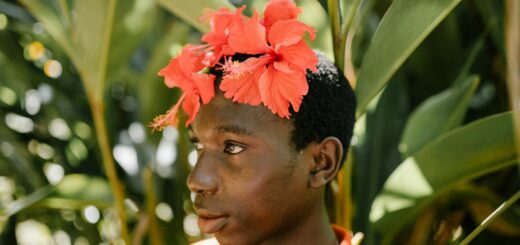Tracing a Spiritual Journey: The History and Cultural Significance of Ayahuasca
Dating back more than 1,000 years, the psychoactive brew known as Ayahuasca has been used by indigenous tribes in the Amazon rainforest as part of their ancient rituals and spiritual practices. Its use in healing ceremonies and exploration of the spiritual realm continues to attract individuals worldwide, seeking profound mystical experiences and emotional healing. This article will delve into the history and cultural significance of Ayahuasca, highlighting its role in traditional beliefs, shamanism, and as a sacred plant medicine.
Ayahuasca, a Quechua term signifying “vine of the soul,” “vine of the dead,” or “spirit vine,” originates from the Amazon Rainforest. Its preparation involves a mixture of two plants: the Banisteriopsis caapi vine and leaves from the Psychotria viridis bush. While the latter contains the primary psychoactive ingredient, DMT (N,N-Dimethyltryptamine), the former provides MAO (monoamine oxidase) inhibitors, which make DMT orally active.
The exact origins of Ayahuasca use are unknown. However, archaeological discoveries suggest a history that extends at least 1,000 years back. According to historical records, Ayahuasca was traditionally used by indigenous tribes for spiritual, divinatory, and healing purposes. These groups held the belief that Ayahuasca could allow humans to connect with supernatural beings and spirits. The traditional beliefs around Ayahuasca spanned from understanding personal and societal problems, diagnosing and treating illnesses, to foreseeing the future.
Shamanism, a practice that believes in the existence of spirits and seeks communion with them, often through a median, has maintained Ayahuasca’s cultural relevance. Indigenous shamans or spiritual leaders conduct an Ayahuasca ceremony wherein members ingest the brew under their close supervision. During these healing ceremonies, the shaman guides individuals on a spiritual journey, often using songs or icaros to navigate psychedelic visions and emotions.
Modern interest in Ayahuasca boomed in recent years, illuminating the sacred plant medicine within the mental health space and beyond. Psychological research institutes have conducted studies to understand the plant’s potential within therapy settings better. Findings have shown that Ayahuasca could contribute positively to mental health, including conditions like PTSD, depression, and addiction.
However, the global interest in Ayahuasca is not without controversies. Critics have raised concerns about Ayahuasca tourism’s exploitation, leading to a dilution of ceremonial practices and fervors of cultural appropriation. There have also been concerns regarding its safety, given that Ayahuasca consumption can have severe physical and psychological effects. Therefore, individuals considering Ayahuasca are urged to research thoroughly and prioritize safety and respect for indigenous cultures.
Fundamentally, Ayahuasca remains a vital part of indigenous traditions, deeply woven into their spiritual and healing practices. Maintaining this cultural context is crucial not just for the integrity of Ayahuasca use, but also as a token of respect to the indigenous tribes whose wisdom has guided its use for centuries.
The history and cultural significance of Ayahuasca demonstrate the indigenous tribes’ profound understanding of their natural environment. This knowledge, passed down the generations, has given the world a unique window into deep spiritual experiences and potential healing modalities. Ayahuasca thus serves as a living testament to tradition, wisdom, and the spiritual bond between humans and nature.
References:
– Ayahuasca – Equadorian mythology
– Ayahuasca | Psi Encyclopedia
– Ayahuasca: Indigenous History and Modern Use | Bioneers

